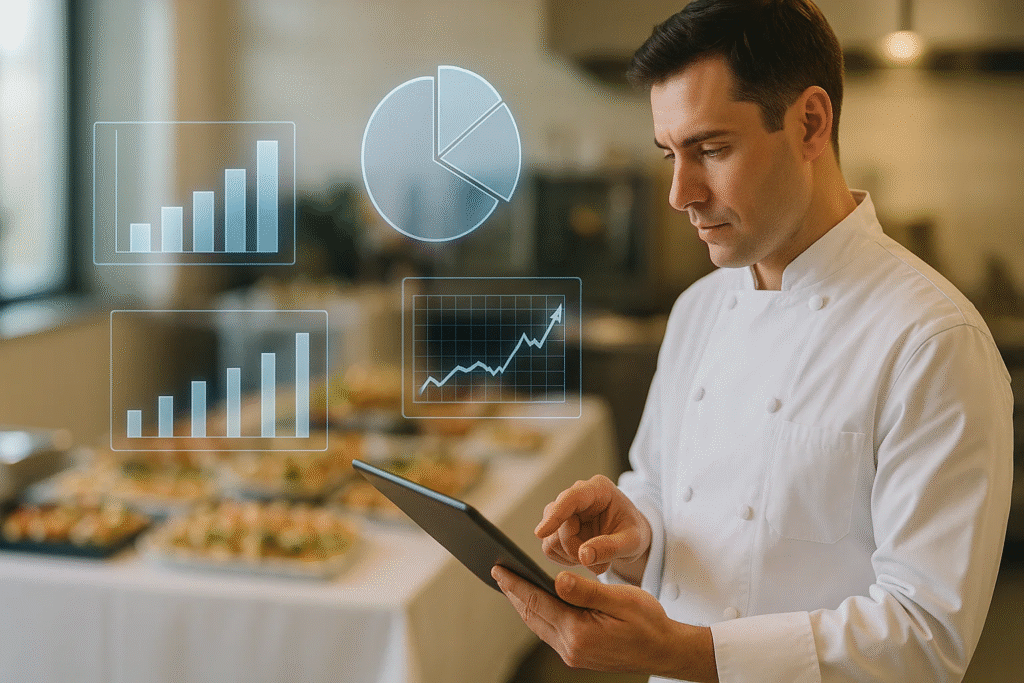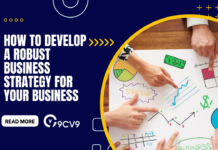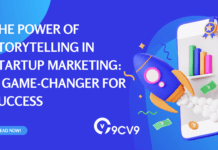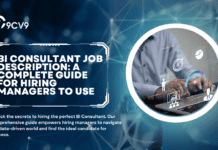Key Takeaways
- Catering software adoption is accelerating in 2025, driven by the demand for automation, real-time planning, and seamless client management.
- AI, cloud computing, and mobile integration are the leading trends shaping the next generation of catering software solutions.
- Sustainability and data-driven decision-making are becoming critical priorities, influencing software features and investment strategies.
In 2025, the catering industry is undergoing a profound transformation, fueled by rapid advancements in digital technology, evolving consumer expectations, and the growing need for operational efficiency.
At the heart of this evolution is catering software—powerful platforms designed to streamline food service operations, enhance client engagement, optimize scheduling, manage inventory, automate invoicing, and improve event planning accuracy.
As businesses in the foodservice and hospitality sectors strive to remain competitive and scalable in an increasingly complex marketplace, catering software solutions are playing an indispensable role in reshaping the way services are delivered and managed.

The global catering software market is witnessing remarkable growth, driven by several converging trends.
These include the rising adoption of cloud-based platforms, integration of artificial intelligence (AI) and machine learning (ML) for predictive analytics, and the surge in mobile-first applications tailored for on-the-go event management.
Furthermore, post-pandemic recovery in the hospitality and event sectors has accelerated the demand for digitized solutions that can ensure seamless customer experiences, reduce manual workloads, and increase profitability across the board.
Whether it’s a boutique catering company handling small private events or a large enterprise managing hundreds of clients and vendors, technology is no longer a luxury but a necessity.
One of the most striking developments in 2025 is the increasing alignment between catering software and broader enterprise resource planning (ERP) systems.
Integration with accounting tools, CRM platforms, and digital marketing suites allows for a unified view of operations, enabling better decision-making and more agile business strategies. Additionally, features like real-time menu customization, dietary preference tracking, automated cost analysis, and dynamic scheduling tools are redefining customer engagement and service delivery standards.
Consumer behavior is also influencing the evolution of catering software. Clients now demand faster response times, transparent pricing, and personalized experiences—all of which can be facilitated through smart software solutions. The growing emphasis on sustainability and waste reduction is prompting the development of tools that monitor food usage, carbon footprint, and sustainable sourcing. These factors are pushing catering companies to invest in platforms that not only handle logistics but also support their brand values and compliance goals.
As the catering landscape becomes increasingly data-driven, understanding the latest statistics, insights, and market trends is critical for stakeholders across the foodservice ecosystem—from software developers and investors to caterers and event planners. In this comprehensive blog, we present the top 30 catering software statistics, data points, and trends shaping the industry in 2025. Whether you’re looking to invest in a new system, upgrade your existing technology stack, or simply stay informed about where the market is headed, these insights will provide valuable guidance and strategic foresight.
From market size projections and user adoption rates to the most in-demand features and future innovations, this data-driven overview will equip you with the knowledge needed to navigate the catering software space with confidence. Let’s dive deep into the facts and figures that define the future of catering technology in 2025.
Before we venture further into this article, we would like to share who we are and what we do.
About 9cv9
9cv9 is a business tech startup based in Singapore and Asia, with a strong presence all over the world.
With over nine years of startup and business experience, and being highly involved in connecting with thousands of companies and startups, the 9cv9 team has listed some important learning points in this overview of the Top 30 Catering Software Statistics, Data & Trends.
If your company needs recruitment and headhunting services to hire top-quality employees, you can use 9cv9 headhunting and recruitment services to hire top talents and candidates. Find out more here, or send over an email to [email protected].
Or just post 1 free job posting here at 9cv9 Hiring Portal in under 10 minutes.
Top 30 Catering Software Statistics, Data & Trends
Catering Software Market Statistics
- The global catering software market was valued at approximately USD 1.2 billion in the year 2023, and it is forecasted to experience substantial growth, reaching an estimated valuation of USD 3.5 billion by the year 2032, reflecting a strong upward trajectory driven by increasing digitalization in the catering industry.
- Projections indicate that the catering software market size will expand from USD 416.7 million in 2025 to USD 1.1 billion by 2032, which corresponds to a compound annual growth rate (CAGR) of approximately 14.9% over this seven-year period, highlighting the accelerating adoption of software solutions in catering operations.
- The comprehensive market report for catering software in 2025 includes over 70 detailed tables and charts that analyze various segments such as Marketing, Order Management, Product Management, and Event Planning software, providing an in-depth understanding of the market dynamics and growth opportunities.
- In 2025, cloud-based catering software solutions are increasingly favored over traditional on-premise deployments due to their enhanced scalability, real-time data accessibility, and reduced upfront infrastructure costs, which collectively contribute to improved operational efficiency for catering businesses.
- The integration of artificial intelligence (AI) technologies, including event planning automation and machine learning algorithms that analyze customer preferences, is identified as one of the primary drivers of innovation and growth within the catering software industry in 2025.
- The regions of North America, Europe, and Asia-Pacific together account for more than 80% of the market share in the on-demand catering software sector in 2025, underscoring the concentration of demand and technological adoption in these key geographic areas.
- The on-demand catering software market was valued at USD 4.6 billion in 2025 and is projected to grow at a robust compound annual growth rate of 20.6% from 2025 through 2033, reflecting the increasing preference for flexible and scalable software solutions in catering services.
- Leading companies dominating the catering software landscape in 2025 include Caterease, Total Party Planner, Curate, Better Cater, EAT Club, ezCaters, Fooda, Cater2.me, and Caviar, each offering specialized functionalities tailored to different segments of the catering market.
- Advanced features such as AI-driven guest list management, real-time logistics tracking, and blockchain-backed secure payment processing are becoming standard components integrated into catering software platforms in 2025, enhancing security, efficiency, and customer experience.
- The United States catering software market is experiencing rapid expansion in 2025, fueled by aggressive innovation, increased investment, easing inflationary pressures, and strengthening consumer confidence, which collectively support higher adoption rates of catering technology solutions.
Catering Industry Market Size and Growth
- The global catering services market is estimated to be valued at approximately USD 674.1 million in 2025, reflecting the continued demand for professional food service solutions across various sectors including corporate, educational, and private events.
- Industry forecasts project that the catering services market will reach a valuation of USD 1.04 billion by 2035, growing at a compound annual growth rate of 4.5% between 2025 and 2035, driven by increasing event activities and evolving consumer preferences.
- Between the years 2025 and 2029, the catering services market is expected to expand by USD 73.2 billion, with a compound annual growth rate of 3.7%, indicating steady growth supported by rising demand in both developed and emerging economies.
- The overall catering market size is forecasted to reach USD 124 billion by 2032, growing at a compound annual growth rate of 6.2%, which reflects the sector’s resilience and adaptability to changing market conditions and consumer trends.
- In 2025, corporate catering represents approximately 60% of the total demand within the catering market, highlighting the significant role that business events, meetings, and corporate functions play in driving catering service consumption.
- The corporate catering segment holds a value share of 30.4% within the catering services market in 2025, underscoring its importance as a key revenue driver for catering businesses focused on serving professional clients.
- Educational institutions account for roughly 18.0% of the catering market’s value share in 2025, driven primarily by the growing emphasis on nutrition-focused meal programs and institutional food service contracts.
- Nearly 48% of catering service providers reported that corporate events constitute their largest growth area in 2025, reflecting the increasing frequency and scale of business-related gatherings requiring professional catering.
- Approximately 80% of companies place catering orders at least once per month, with 32% ordering on a weekly basis in 2025, which demonstrates the regular and recurring nature of catering demand in the corporate sector.
- On average, a single catering order exposes a brand to around 25 new guests, thereby significantly amplifying marketing reach and brand awareness through event-based food service engagements.
Catering Operational and Consumer Behavior Statistics
- The average check size for catering orders is approximately $381, which is an impressive 1,389% larger than the average traditional takeout order, highlighting the higher spending and scale associated with catering purchases.
- Restaurants that utilize specialized catering platforms, such as Lunchbox, report average check sizes exceeding $500 per order, indicating that dedicated catering software can drive higher revenue per transaction.
- About 40% of first-party catering orders include additional items such as chips or guacamole as add-ons, which contribute to increasing the overall order value and enhancing the customer’s dining experience.
- The number of guests who order catering services five or more times annually increased by 286% year-over-year, signifying a rapid growth in repeat catering customers and the importance of customer loyalty in this market.
- Approximately 20% of catering customers are repeat guests, which highlights the critical role of customer retention strategies and personalized service in sustaining catering business growth.
- The busiest days for catering orders are Wednesdays, Thursdays, and Tuesdays, which requires catering companies to strategically plan their operations and staffing to efficiently manage peak demand periods.
- The catering software market is witnessing a high level of merger and acquisition activity in 2025, as larger companies seek to acquire innovative startups to expand their market presence and enhance their technology offerings.
- There is a significant shift towards healthier, organic, and customized menu options within the catering services sector, with increasing demand for gluten-free, vegan, and allergen-friendly meals reflecting evolving consumer preferences.
- Emerging trends in catering software include AI-driven menu customization and demand forecasting capabilities, which help caterers optimize their operations, reduce waste, and improve customer satisfaction through personalized offerings.
- The catering industry is increasingly adopting carbon-zero and zero-waste practices, with artificial intelligence being used to optimize logistics for ingredient sourcing and delivery routes, thereby reducing environmental impact and improving sustainability.
Conclusion
As we’ve explored throughout this comprehensive overview of the Top 30 Catering Software Statistics, Data & Trends in 2025, one thing is abundantly clear: the catering industry is in the midst of a digital revolution. From automation and artificial intelligence to cloud computing and mobile integration, catering software is no longer a secondary tool—it’s a core driver of business efficiency, client satisfaction, and sustainable growth.
The insights and trends presented in this blog reflect the rapidly changing demands of both businesses and consumers. As catering companies adapt to a post-pandemic era characterized by hybrid events, dietary personalization, and increased regulatory compliance, technology is stepping in to provide intelligent solutions that enhance every touchpoint of the customer journey. Whether it’s streamlining menu planning, improving order accuracy, enabling real-time collaboration, or generating detailed financial reports, catering software is evolving to support more than just logistics—it’s becoming an indispensable strategic asset.
The statistics we’ve covered illustrate several pivotal developments. The rise of cloud-based catering platforms is enabling remote access and scalability, AI-powered features are enhancing decision-making through data analytics, and mobile-first solutions are empowering teams to manage events and communications on the go. Additionally, sustainability-focused tools are helping businesses align with growing environmental and social expectations, while integration with third-party systems like CRM, accounting, and HR platforms is enabling a seamless digital ecosystem.
For catering businesses of all sizes—from local event caterers to enterprise-level foodservice providers—embracing these software innovations is no longer optional. It is critical for staying competitive, reducing operational costs, and exceeding client expectations in 2025 and beyond. Companies that are agile enough to adopt and adapt will not only improve their efficiency but also unlock new revenue streams and opportunities for innovation.
Moreover, this data underscores the growing investment in and prioritization of digital transformation across the hospitality and event planning sectors. As software providers continue to refine their offerings based on user feedback, market demands, and technological advancements, the capabilities of catering platforms will only become more powerful, more customizable, and more user-centric.
Decision-makers must remain proactive, keeping a close eye on emerging trends such as machine learning-driven forecasting, virtual reality-based event previews, advanced inventory automation, and end-to-end integration with eCommerce and delivery platforms. By leveraging the insights from the top 30 statistics and trends we’ve highlighted, catering professionals can make informed choices about which tools to implement, which features to prioritize, and how to future-proof their operations.
In conclusion, 2025 represents a landmark year for catering technology. With the right data, tools, and strategies, catering companies can move beyond basic service delivery to offer extraordinary, tech-enhanced experiences that delight clients and drive long-term success. Whether you are upgrading your existing catering software, exploring new platforms, or simply seeking to understand the market better, staying informed about these trends will be your most valuable asset in a fast-changing industry landscape.
Stay ahead of the curve, embrace innovation, and let data-driven catering software be the backbone of your business success in 2025 and the years to come.
If you find this article useful, why not share it with your hiring manager and C-level suite friends and also leave a nice comment below?
We, at the 9cv9 Research Team, strive to bring the latest and most meaningful data, guides, and statistics to your doorstep.
To get access to top-quality guides, click over to 9cv9 Blog.
People Also Ask
What is catering software and how does it work in 2025?
Catering software in 2025 streamlines event planning, menu creation, invoicing, scheduling, and client communication using cloud-based and AI-powered tools.
Why is catering software important in 2025?
It enhances operational efficiency, improves customer experience, and helps caterers manage complex events with real-time data and automation.
What are the top trends in catering software for 2025?
AI integration, mobile-first design, sustainability tracking, cloud adoption, and real-time collaboration are leading trends in 2025.
How is AI impacting catering software in 2025?
AI powers demand forecasting, automates menu planning, reduces food waste, and personalizes customer interactions.
Is cloud-based catering software more popular in 2025?
Yes, cloud-based platforms dominate the market in 2025 due to their scalability, remote access, and seamless updates.
What role does mobile technology play in catering software?
Mobile apps allow caterers to manage bookings, track inventory, and communicate with clients on the go, enhancing flexibility.
Are catering companies using data analytics in 2025?
Yes, data analytics help caterers optimize operations, understand customer behavior, and make informed business decisions.
How has catering software improved customer service in 2025?
It enables faster response times, personalized menus, real-time updates, and transparent communication with clients.
What are the most requested features in catering software today?
Event scheduling, invoicing, CRM integration, dietary tracking, and inventory management are among the most requested features.
How does catering software help reduce food waste in 2025?
It uses data to forecast demand accurately, track inventory, and plan portions, leading to more sustainable practices.
What industries benefit most from catering software?
Hospitality, event planning, corporate catering, schools, and healthcare services gain significant value from using catering software.
Is catering software scalable for small businesses in 2025?
Yes, many solutions offer tiered pricing and flexible features suitable for both small caterers and large enterprises.
What is the market size of catering software in 2025?
The global catering software market continues to grow steadily, with billions in projected revenue by the end of 2025.
What impact does catering software have on profitability?
By automating tasks and reducing errors, catering software helps businesses save time, lower costs, and increase profits.
Can catering software integrate with accounting tools?
Yes, modern platforms integrate seamlessly with accounting systems to streamline invoicing, billing, and financial reporting.
Does catering software offer CRM functionality?
Many catering platforms include or integrate with CRM tools to manage customer relationships and marketing campaigns.
Are there AI-driven catering software options in 2025?
Absolutely. AI-powered platforms offer advanced features like predictive analytics, smart scheduling, and automated customer responses.
How secure is catering software in 2025?
Leading solutions use advanced encryption, data backup, and user access controls to ensure data security and privacy.
How are caterers using software for sustainability in 2025?
Software helps track food sourcing, waste reduction, energy use, and carbon footprint to support eco-friendly operations.
What’s the role of automation in catering software?
Automation streamlines repetitive tasks like order processing, client communication, and event scheduling, boosting productivity.
Can catering software be customized for niche businesses?
Yes, many platforms offer customizable templates, modules, and workflows tailored to specific catering services.
Is offline access available in modern catering software?
Some platforms offer offline functionality or mobile syncing, ensuring access even in low-connectivity environments.
What is the ROI of using catering software in 2025?
Businesses typically see strong ROI through time savings, improved efficiency, enhanced customer retention, and reduced waste.
How often is catering software updated in 2025?
Most cloud-based solutions receive regular updates for security, performance, and feature enhancements without user downtime.
Which regions are leading in catering software adoption?
North America and Europe are leading, but adoption in Asia-Pacific and the Middle East is rapidly increasing.
Are catering software tools user-friendly in 2025?
Yes, platforms focus on intuitive interfaces, drag-and-drop builders, and onboarding support for ease of use.
What are the most popular catering software platforms in 2025?
Popular platforms include Caterease, Total Party Planner, Better Cater, Flex Catering, and Planning Pod, among others.
Can catering software support hybrid or virtual events?
Yes, many platforms now offer tools for managing virtual or hybrid catering setups, including online menus and delivery tracking.
Do clients prefer caterers using advanced software tools?
Clients appreciate transparency, speed, and personalization—key benefits offered by tech-savvy catering businesses.
How can businesses choose the best catering software in 2025?
Evaluate features, scalability, integrations, customer support, user reviews, and pricing before selecting a platform.
Sources
- Global Catering Software Market Report 2025-2033 by Market Research Future (MRFR)
- Catering Services Market Trends & Demand 2025-2035 by Future Market Insights (FMI)
- On-Demand Catering Software Market Report 2025-2033 by Data Insights Market
- Catering Industry Statistics and Trends 2025 by Lunchbox.io
- Catering Services Market Growth Forecast 2025-2029 by Technavio (via PR Newswire)
- MarketWatch reports on Catering Software and Services Market
- Grand View Research reports on Catering Software Market
- Allied Market Research on Catering Services Market
- Statista data on Catering and Food Service Industry
- IBISWorld Catering Industry Reports
- Deloitte and PwC reports on Food Service Technology Trends
- Reports and press releases from major catering software companies such as Caterease, Curate, and Better Cater































![Writing A Good CV [6 Tips To Improve Your CV] 6 Tips To Improve Your CV](https://blog.9cv9.com/wp-content/uploads/2020/06/2020-06-02-2-100x70.png)


